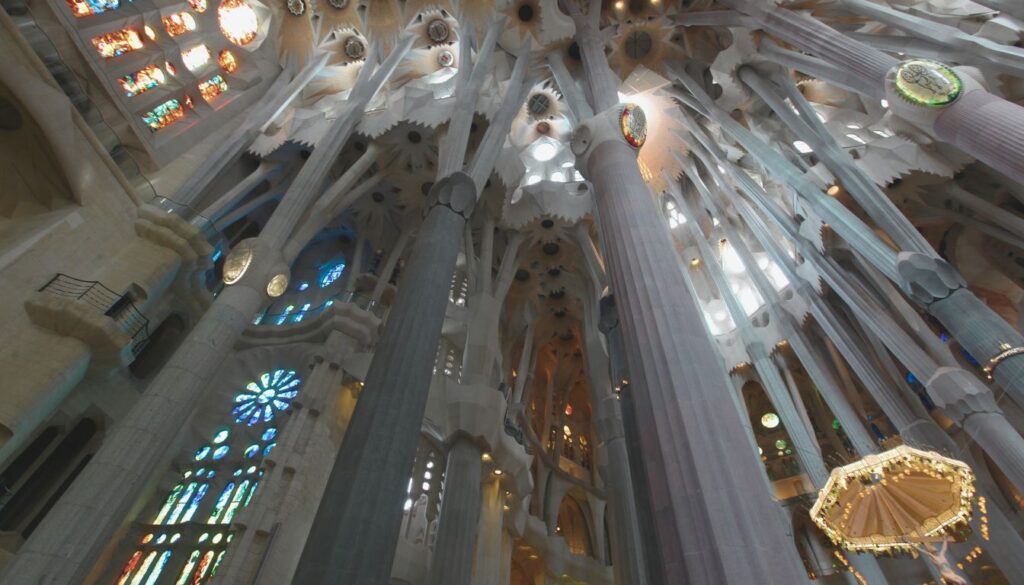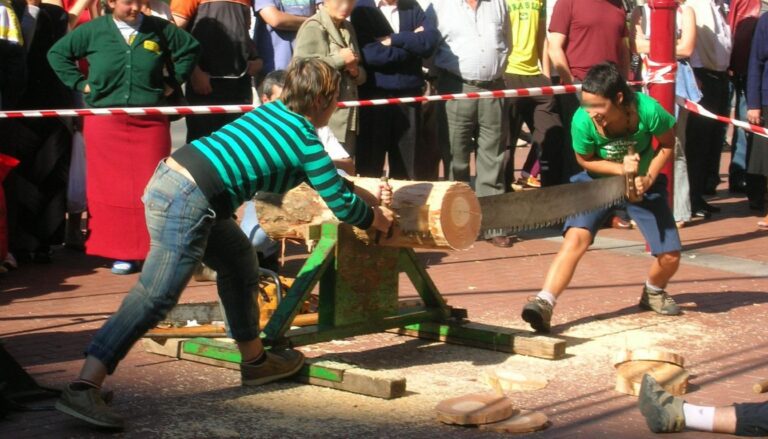When you think of Spain, you might imagine people speaking Spanish everywhere. But did you know that in some parts of Spain, people speak a different language called Catalan? Catalan isn’t just a dialect of Spanish – it’s a completely separate language with its own rich history and cultural significance.
Catalan is the official language of Catalonia, a region in northeastern Spain that includes the famous city of Barcelona. It’s also spoken in other areas, like Valencia and the Balearic Islands. For many people in these regions, Catalan is more than just a way to communicate – it’s a key part of their identity and culture.
In this article, we’ll explore the Catalan language, its history, and why it’s so important to the people who speak it. We’ll look at how Catalan is different from Spanish, where it came from, and how it’s used today. Whether you’re planning a trip to Barcelona or just curious about languages, understanding Catalan can give you a deeper appreciation of the diverse cultures within Spain.
Table of Contents
The Origins and History of Catalan

Like many languages in Europe, Catalan has its roots in Latin, the language of the ancient Romans. Here’s a quick timeline of how Catalan developed:
- Roman times (1st-5th centuries AD): The Romans brought Latin to the Iberian Peninsula.
- Middle Ages (8th-15th centuries): As Latin evolved differently in various regions, Catalan emerged as a distinct language.
- Golden Age (13th-15th centuries): Catalan literature flourished, and the language spread across the Mediterranean.
- Decline (16th-18th centuries): The use of Catalan decreased as Castilian Spanish became more dominant.
- Renaixença (19th century): A cultural movement revived interest in Catalan language and culture.
- 20th century: Catalan faced suppression during Francisco Franco’s dictatorship (1939-1975).
- Modern era: Since Spain’s return to democracy, Catalan has experienced a resurgence.
Throughout its history, Catalan has been influenced by other languages, including Arabic, Occitan, and French. This rich linguistic heritage has shaped Catalan into the unique language it is today.
Where is Catalan Spoken?
Catalan isn’t just limited to Catalonia. Here’s where you can hear Catalan spoken:
- Catalonia: The heartland of Catalan, where it’s an official language alongside Spanish.
- Valencia: Here, the local variety is called Valencian.
- Balearic Islands: Including Mallorca, Menorca, and Ibiza.
- Andorra: A small country between Spain and France where Catalan is the only official language.
- Parts of Southern France: In an area called Northern Catalonia.
- The city of Alghero: On the Italian island of Sardinia.
In total, about 10 million people speak Catalan. While this might seem small compared to languages like Spanish or English, it’s actually more speakers than some European countries have people!
Catalan Language Structure and Characteristics
Catalan has some unique features that set it apart from other Romance languages:
- Pronunciation: Catalan has some sounds that don’t exist in Spanish, like the “open e” sound.
- Grammar: Catalan uses different word orders and has some grammatical structures not found in Spanish.
- Vocabulary: While many words are similar to Spanish, Catalan also has words that come from other languages.
- Articles: Catalan uses different articles before nouns, like “el” and “la”, similar to French.
- Verb conjugations: Catalan verbs change in ways that are different from Spanish verbs.
Here’s a fun fact: Catalan often drops the final letter of words, which can make it sound a bit different from Spanish. For example, the word for “all” is “todo” in Spanish, but “tot” in Catalan.
Catalan vs. Spanish: Understanding the Differences
While Catalan and Spanish are both Romance languages, they’re quite different. Here are some key distinctions:
- Vocabulary: About 85% of Catalan words are different from Spanish.
- Pronunciation: Catalan has sounds that don’t exist in Spanish, like the “neutral vowel.”
- Grammar: Catalan uses different verb tenses and has some unique grammatical structures.
- Word order: Sometimes, Catalan puts words in a different order than Spanish would.
- Articles: Catalan uses articles in some places where Spanish doesn’t.
Here’s a quick comparison:
- Hello: Hola (Spanish) vs. Hola (Catalan) – same!
- Goodbye: Adiós (Spanish) vs. Adéu (Catalan)
- Thank you: Gracias (Spanish) vs. Gràcies (Catalan)
- Good morning: Buenos días (Spanish) vs. Bon dia (Catalan)
As you can see, some words are similar, while others are quite different!
The Role of Catalan in Education
Education plays a big part in keeping the Catalan language alive and thriving. Here’s how:
- Immersion programs: In Catalonia, most schools teach primarily in Catalan.
- Bilingual education: Students learn both Catalan and Spanish throughout their school years.
- University courses: Many universities in Catalonia offer courses in Catalan.
- Adult education: There are lots of classes for adults who want to learn or improve their Catalan.
- Teacher training: Teachers in Catalonia need to be proficient in Catalan.
This focus on Catalan in education helps ensure that younger generations grow up fluent in the language, keeping it alive for the future.
Catalan Literature and Media
Catalan has a rich literary tradition and a vibrant media landscape:
- Literature: Catalan literature dates back to the Middle Ages, with famous works like “Tirant lo Blanch.”
- Poetry: Poets like Jacint Verdaguer and Salvador Espriu have written beautiful works in Catalan.
- Newspapers: There are several Catalan-language newspapers, like “Ara” and “El Punt Avui.”
- TV and radio: Catalonia has its own public broadcasting corporation, which produces shows in Catalan.
- Music: Many artists sing in Catalan, from traditional folk music to modern pop and rock.
- Theater: Barcelona has a thriving theater scene, with many plays performed in Catalan.
These cultural expressions help keep the language vibrant and relevant in modern times.
Catalan in the Digital Age
Like any modern language, Catalan has had to adapt to the digital world:
- Social media: Many Catalans use their language on platforms like Twitter and Facebook.
- Websites: There are numerous websites in Catalan, including a Catalan version of Wikipedia.
- Apps: Some popular apps have Catalan versions, and there are apps specifically for learning Catalan.
- Online resources: There are many online dictionaries, translators, and language learning tools for Catalan.
- Video games: Some games have been translated into Catalan, especially educational ones.
The presence of Catalan in digital spaces helps ensure its continued use and relevance, especially among younger generations.
Challenges and Controversies Surrounding Catalan
While Catalan is an important part of many people’s identities, it’s not without its challenges:
- Political debates: The use of Catalan is sometimes a point of political controversy in Spain.
- Balancing with Spanish: There are ongoing discussions about how to balance Catalan and Spanish in education and public life.
- Standardization: Like many languages, there are debates about what “correct” Catalan should be.
- Global pressures: In a world where English is increasingly important, some worry about Catalan’s future.
- Regional variations: There are differences in how Catalan is spoken in different areas, which can sometimes cause confusion.
Despite these challenges, many people are working hard to preserve and promote the Catalan language.
Learning Catalan: Resources and Tips
Interested in learning some Catalan? Here are some resources and tips:
- Language apps: Platforms like Duolingo offer Catalan courses.
- Online courses: Websites like Parla.cat offer free Catalan lessons.
- Language exchanges: Find a language partner to practice with, either in person or online.
- Immersion: If possible, spend time in a Catalan-speaking area to hear the language in everyday use.
- Media: Watch Catalan TV shows, listen to Catalan music, or read Catalan newspapers to improve your skills.
Remember, learning a new language takes time and practice, but it can be a rewarding experience!
The Future of the Catalan Language
What does the future hold for Catalan? Here are some trends and predictions:
- Digital presence: Catalan is likely to continue growing its presence online and in digital media.
- Education: The focus on Catalan in schools will probably continue, helping maintain the language.
- Global connections: As Catalonia connects more with the world, Catalan might gain more international recognition.
- Language technology: Advances in translation technology might make it easier for non-speakers to engage with Catalan content.
- Cultural production: Continued creation of literature, music, and media in Catalan will help keep the language vibrant.
While there are challenges, many people are optimistic about the future of Catalan as a living, evolving language.
Conclusion: The Enduring Importance of Catalan
The Catalan language is much more than just a way to communicate – it’s a key part of cultural identity for millions of people. From its ancient roots to its modern digital presence, Catalan has shown remarkable resilience and adaptability.
For the people of Catalonia and other Catalan-speaking regions, their language is a source of pride and a link to their history and culture. It’s a way to express themselves that goes beyond just words – it’s about who they are and where they come from.
Understanding the importance of Catalan can give us a deeper appreciation of the diversity within Spain and Europe as a whole. It reminds us that languages are living things, shaped by history and culture, and that they play a crucial role in how people see themselves and their place in the world.
Whether you’re planning a trip to Barcelona, interested in learning a new language, or simply curious about different cultures, the story of Catalan offers fascinating insights into the power of language to shape identity and community.
Discover the must-visit cultural destinations of Catalonia
To learn more about the Catalan Language, you can visit the Institut d’Estudis Catalans













